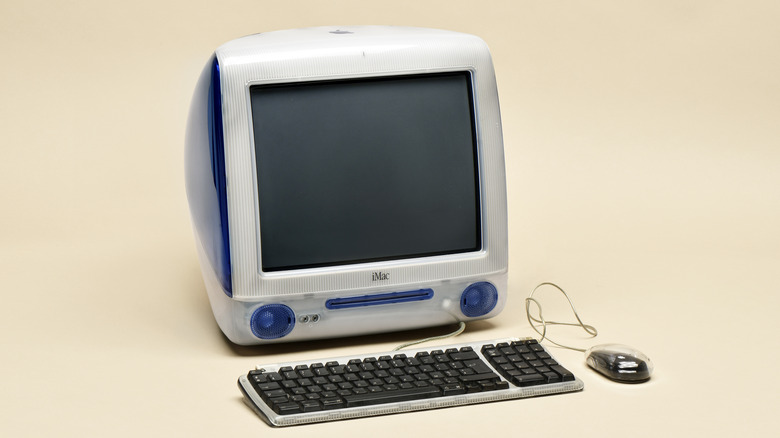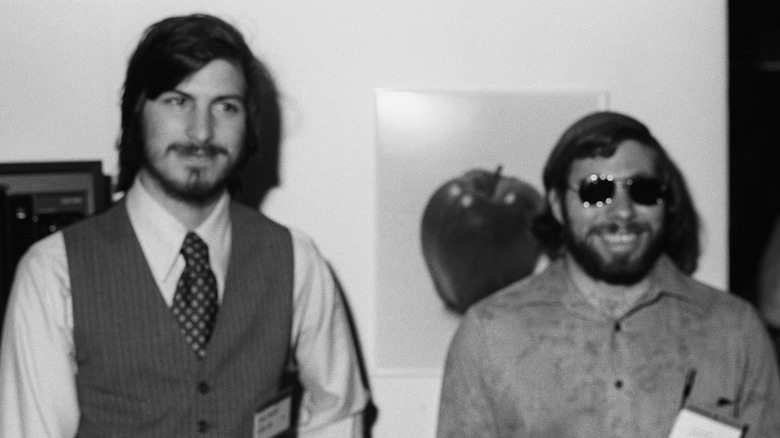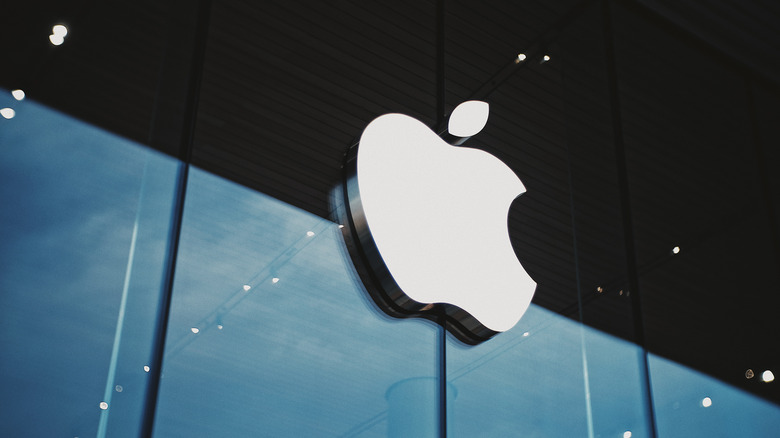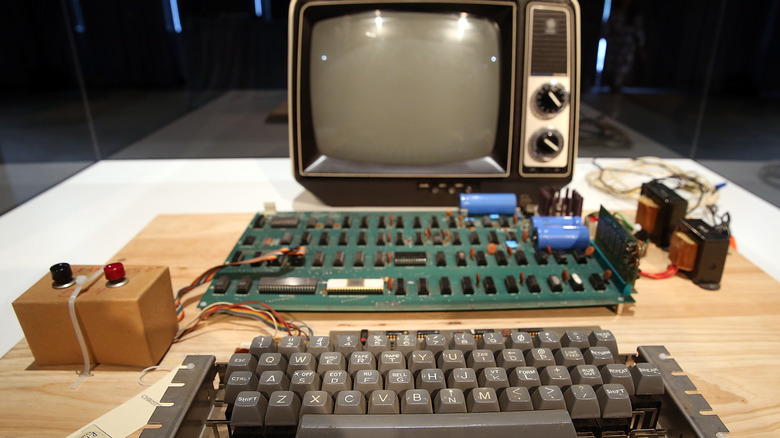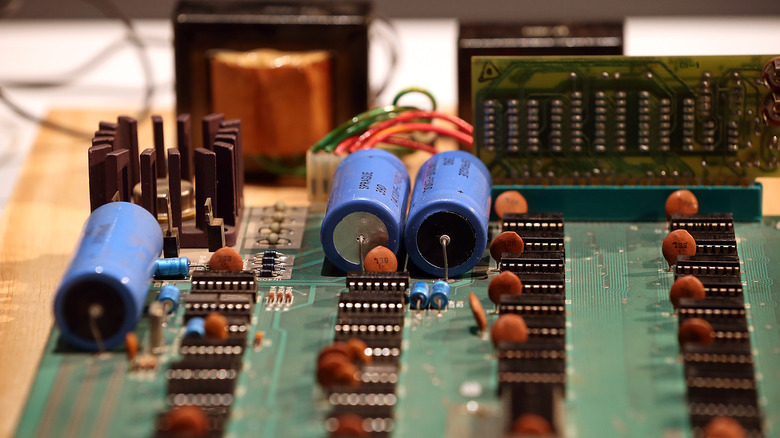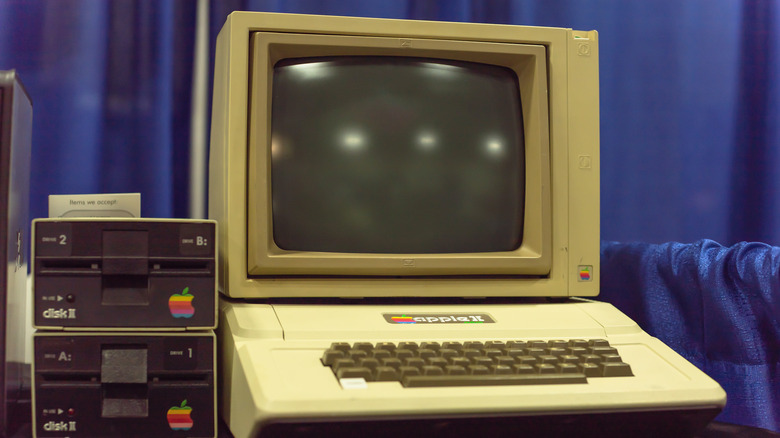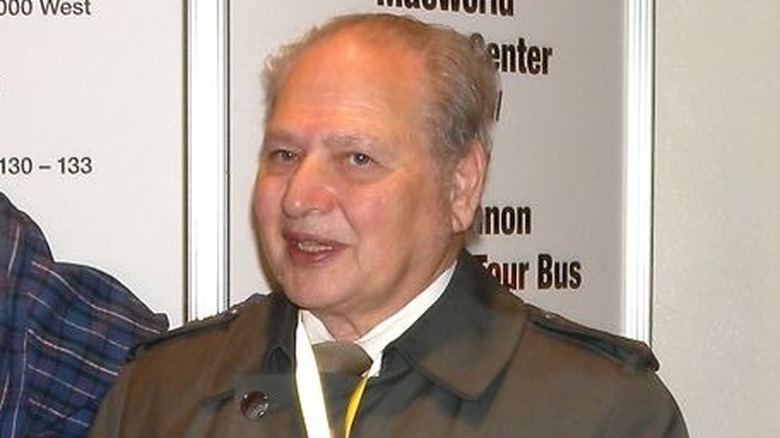The Bizarre Story Of Apple's Unknown Third Co-Founder
Even most technology-averse people can rattle off the names of at least one of the Apple founders, if not two. There's a good chance if they can spit out one name, it'll belong to Steve Jobs, while those a little more in the know can probably come up with Steve Wozniak. Very few, however, can come up with the name of the third key founder, who has become legendary for a very different reason than Jobs or Wozniak.
His name is Ronald Wayne, and — to use a music analogy — in a way he's the Pete Best of Apple Computers. They both did their job and did it well, but for whatever reason, whether they were in the wrong place at the wrong time or just made a decision that cost billions, they wound up on the other side of the equation from their fellow founders just before they struck it big.
"I was 40 and these kids were in their 20s," Wayne told Cult of Mac. "They were whirlwinds — it was like having a tiger by the tail. If I had stayed with Apple I probably would have wound up the richest man in the cemetery."
The early days of Apple
The year was 1976, the peak of disco, and the computers of the era — much like the shirt collars — were enormous. Two college dropouts decided it was time for computers to get to a more manageable, user-friendly size so that the average person could afford to have a computer in their house. The two were Steve Jobs and Steve Wozniak, names that would go on to become legendary in the world of technology, but in 1976 they were sitting in Jobs' garage tinkering away with on circuit boards.
According to Britannica, the two had gone to the same high school and their first business endeavor was selling a device for phreaking — placing long-distance calls at payphones for free. Wozniak and Jobs (above, left) were members of the Homebrew Computer Club, and after selling Jobs' car and Wozniak's programmable calculator they got to work on a microcomputer. It was popular and as business started picking up they brought a man named Ronald Wayne (above, right) into the fold (via Cult of Mac).
Who is Ronald Wayne?
According to Wayne's website, he was born in Cleveland, Ohio on May 17, 1934. Through the 1950s, 1960s, and 1970s, Wayne worked as an electrical-mechanical engineering and product developer. Jobs and Wozniak knew Wayne, and perhaps sensing the direction of where their burgeoning company was headed, called him to help. Wayne was in his 40s, while Jobs was 25 and Wozniak was just 21, so he was brought in to provide the pair with some "adult supervision" (via CNBC).
Wayne was the one at the typewriter, click-clacking away on an agreement that detailed the responsibilities of each founder and which made the company official on April 1, 1976. They all brought something to the table. Wozniak was the technology wizard, Jobs was the visionary, and Wayne brought a wealth of experience. Wayne also has the distinction of having drawn the company's first logo, which would only be in use for about a year before it was replaced by an early version of the instantly recognizable logo seen today.
Apple unveils the Apple I
The Apple founders produced their first offering and dubbed it the Apple I. According to The Library of Congress, it was essentially the guts of what most people think of as a computer, as the Apple I was sold without a monitor, keyboard, mouse, or even a protective casing, which meant that the intention was for them to be purchased by hobbyists who liked playing around with computers. Wozniak designed the circuit board while Wayne wrote the operational manual, per Apple Museum. Apple sold the computers for $666.66 apiece, which would be over $3,000 today.
The owner of a computer store called the Byte Shop liked what he saw from the Apple I and wanted to buy 100 units. While this sounds like maybe one of the best things that could happen to a young company, it was also the moment that caused Ronald Wayne a lot of concern over his involvement with Apple.
Ronald Wayne has second thoughts
According to an interview Wayne did with Insider, Jobs struck a deal with The Byte Shop where the computer retailer would buy somewhere between 50 and 100 Apple I units. After this deal, Jobs borrowed $15,000 to build the computers, but this is where Wayne started seeing red flags. The Byte Shop had a reputation in the computer scene for not paying bills, and if that happened to Apple, the company would be left scrambling to pay back that $15,000. Jobs and Wozniak were so young, whereas Wayne was established and had assets to worry about. He feared that any debts the company incurred would fall squarely on him (via CNBC).
This concern, coupled with his belief that he didn't have the time or energy to fully commit to the company, led to his decision to bow out of Apple. So, just 12 days into the company's existence, Wayne had his name removed from the contract. He was paid $800 for his 10% stake in the company. Today, that 10% would be worth around $80 billion.
Apple hits the big time
A Wayne-less Apple soldiered on. The Apple I managed to sell to a decent degree, but the company hit paydirt with its successor, the Apple II (via Apple Museum). It's the product that put Apple on the map and sent the company on its way to becoming one of the most valuable in the world. The Apple II was a complete computer in the sense that it included a keyboard and a monitor. It was far more user-friendly for those who weren't already computer hobbyists. It even featured color graphics, a first (via The Library of Congress).
Apple saw a staggering jump in sales, from $7.8 million in 1978 to $117 million in 1980. Of course, from there, the company grew. Wozniak left in 1983, after deciding he had less interest in the day-to-day running of the company. Jobs left in 1985. The company was still successful, but suffered through some lean years in the 1990s. Jobs eventually returned and the company exploded with the release of iconic products like the iBook, iPod, iPhone, and iPad.
Ronald Wayne today
While the amount of money that Wayne passed on is enough to make most people dizzy enough to have to lay down, he said he has no regrets over the decision. "I would wind up in the documentation department shuffling papers for the next 20 years," he told Insider. He also said that he knew even way back then that the was "standing in the shadow of giants" and if he had stayed with Apple, he would've never had a project of his own. "I can say this, however. I've never been rich, but I've never been hungry either," he said.
According to CNBC, Wayne held on to that original Apple contract until the 1990s, at which point he sold it for $500. "I had this Apple contract sitting in my filing cabinet, covered in dust and cobwebs, and I thought, 'What do I need to hold onto that for?'" he told Cult of Mac. According to the TV series "The Filthy Rich Guide," in 2011 that same contract, which Wayne drafted in 1976, went on to sell at auction for $1.59 million (via CNBC).
